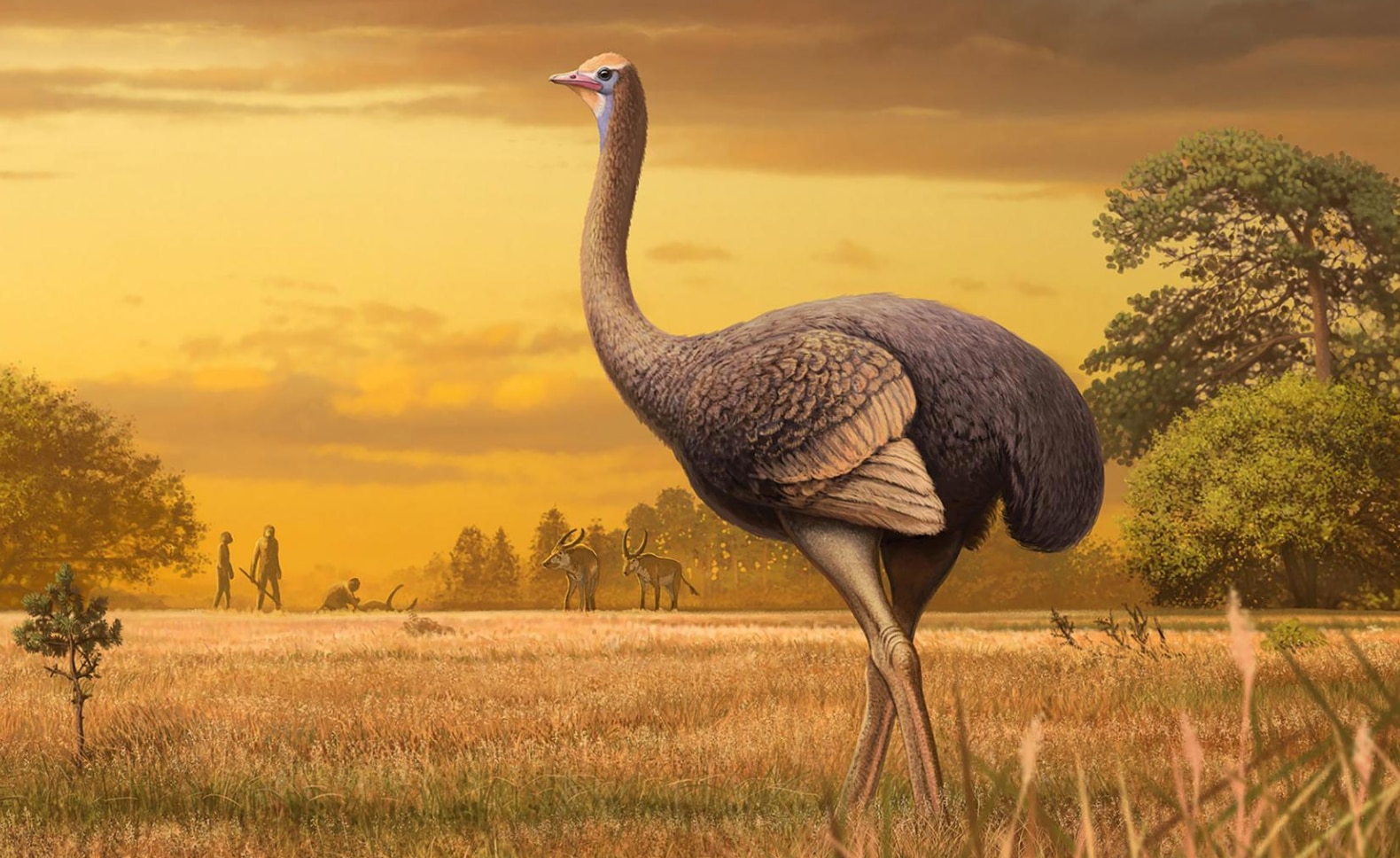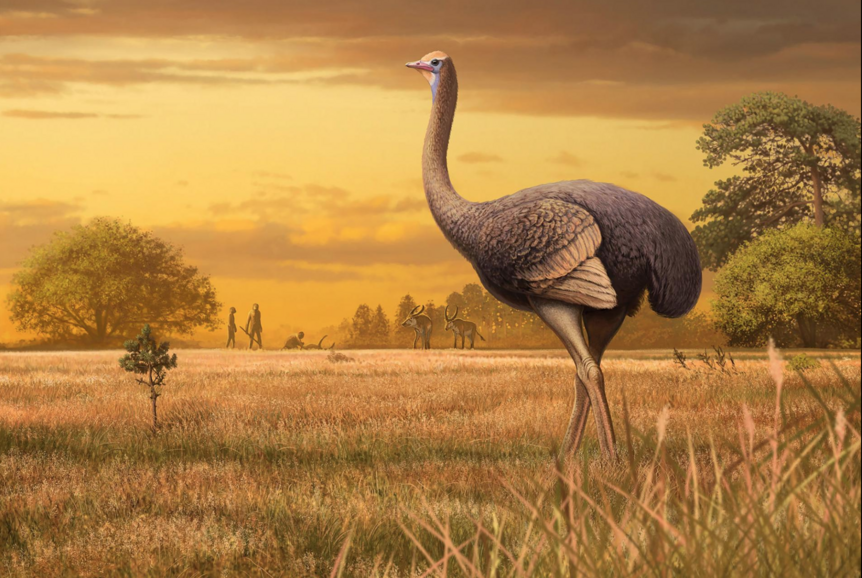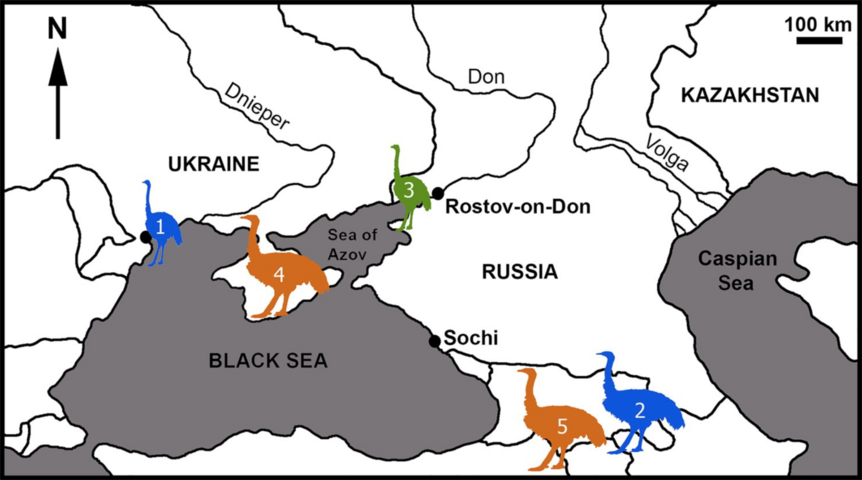Create a free profile to get unlimited access to exclusive videos, sweepstakes, and more!
This humongous 12-foot flightless bird once shared Earth with early humans

Don't even consider making this ancient avian the star attraction for your next Thanksgiving meal, as it would likely fight back furiously before becoming a roasted feast. Not to mention the size of an oven required, the fact that it went extinct two million years ago, and that it lived beside early Eastern European humans on the plains of what is now the Black Sea region.
Russian scientists have recently discovered the rare fossilized remains of Pachystruthio dmanisensis, a 12-foot-tall flightless bird that was three times the size of a modern-day ostrich and would even dwarf Sesame Street's yellow-feathered resident, Big Bird.
Described this week in the Journal of Vertebrate Paleontology by a team of researchers and scientists, this Pleistocene Epoch mammal is the first super-sized flightless bird known to have made the Northern Hemisphere its home and once tipped the scales somewhere just shy of 1,000 pounds. That's one big pair of drumsticks!
It's also been theorized that the flightless Pachystruthio might likely have been on the menu for our early human relative Homo erectus as an excellent source of nutrition, similar to the hunting and eating of giant moas, another flightless bird, by hungry New Zealand humans.
A portion of this humongous bird's fossil was unearthed last summer in Taurida Cave, a wealth of prehistoric animal bones revealed in 2018 during state highway construction on the Crimean peninsula near the Black Sea. The behemoth creature's thigh bone, aka the femur, was discovered among other fossilized specimens in the cave’s Hyena Den, aptly named due to its abundance of ancient hyena remains.
Its remarkably well-preserved state let paleontologists compare the leg bone to femurs of other ostrich-like birds and correctly identify it as a new genus, Pachystruthio. Since it co-existed with notorious carnivoran mammals like saber-toothed tigers and giant hyenas, the newly found species had to be a swift runner to avoid becoming dinner.
"The newfound bird is really extraordinary for Europe—it’s not the world’s biggest in itself, but it is the European champion,” James Hansford, a paleontologist at London's Institute of Zoology, told National Geographic. "Only two elephant birds from Madagascar, Vorombe titan and Aepyornis maximus, beat this ancient giant in terms of size. The straight shaft [of the bone] means it was a much heavier, slower bird—probably faster than some of the elephant birds, but not as fast as the modern ostrich.”
Think you could outrun this enormous land-based bird before it pecked you silly?
















